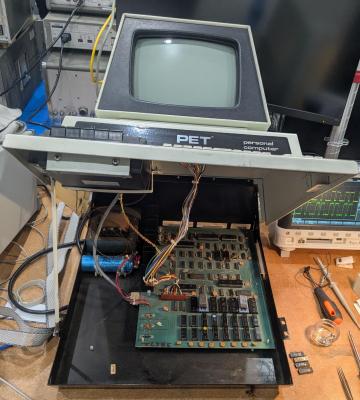When a man wearing an Atari T-shirt tells you he’s buying Commodore it sounds like the plot for an improbable 1980s movie in which Nolan Bushnell and Jack Tramiel do battle before a neon synthwave sunset to a pulsating chiptune soundtrack. But here on the screen there’s that guy doing just that, It’s [Retro Recipes], and in the video below he’s assembling a licensing deal for the Commodore brand portfolio from the distant descendant of the Commodore of old.
It’s a fascinating story and we commend him for tracing a path through the mess that unfolded for Commodore in the 1990s. We tried the same research path with a friend a few years ago and ended up with an anonymous Dutch paper company that wouldn’t answer our calls, so we’re impressed. In conjunction with several other players in the Commodore retrocomputing world he’s trying to assemble a favourable percentage deal for manufacturers of new parts, computers, and other goodies, and we’re pleased to see that it’s for the smaller player as much as for the industry giant.
When looking at a story like this though, it’s important not to let your view become clouded by those rose tinted glasses. While it’s great that we’re likely to see a bunch of new Commodore-branded Commodore 64s and parts, there are many pitfalls in taking it beyond that. We’ve seen the Commodore logo on too many regrettable licensed products in the past, and we fear it might be too tempting for it to end up on yet another disappointing all-in-one video game or just another budget PC. If something new comes out under the Commodore brand we’d like it to be really special, exploiting new ground in the way the Amiga did back in the day. We can hope, because the alternative has dragged other famous brands through the mud in recent years.
If you want an insight into the roots of the original Commodore’s demise, have a read of our Hackaday colleague [Bil Herd]’s autobiography.



















